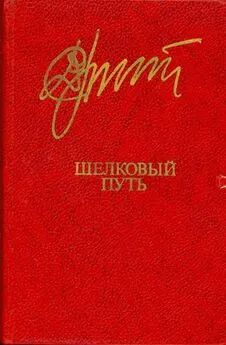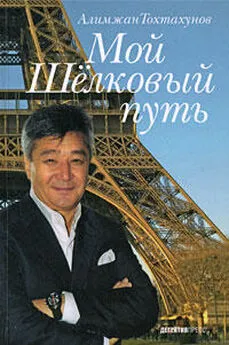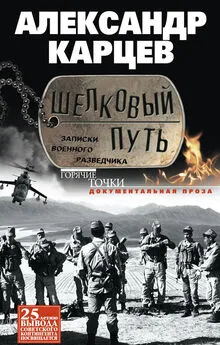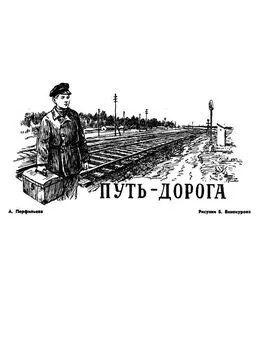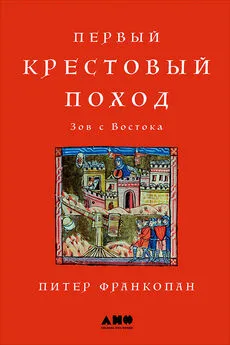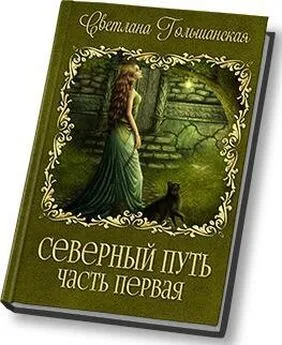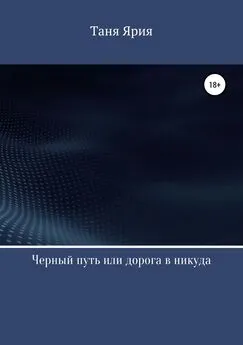Питер Франкопан - Шелковый путь. Дорога тканей, рабов, идей и религий
- Название:Шелковый путь. Дорога тканей, рабов, идей и религий
- Автор:
- Жанр:
- Издательство:Литагент 5 редакция
- Год:2017
- Город:Москва
- ISBN:978-5-699-95706-4
- Рейтинг:
- Избранное:Добавить в избранное
-
Отзывы:
-
Ваша оценка:
Питер Франкопан - Шелковый путь. Дорога тканей, рабов, идей и религий краткое содержание
Вы увидите, что история развивалась совсем не так, как мы привыкли изучать в школе. Так, столетия назад интеллектуальные центры мира, «Оксфорды» и «Кембриджи», «Гарварды» и «Йели», находились не в Европе, а в городах Средней Азии, куда и съезжалась вся просвещенная молодежь в поисках успеха.
Шелковый путь. Дорога тканей, рабов, идей и религий - читать онлайн бесплатно ознакомительный отрывок
Интервал:
Закладка:
973
A. Clot, Suleiman the Magnificent: The Man, his Life, his Epoch , tr. M. Reisz (New York, 1992), р. 79, а также R. Finlay, ‘Prophecy and Politics in Istanbul: Charles V, Sultan Suleyman and the Habsburg Embassy of 1533–1534’, Journal of Modern History 3 (1998), рр. 249–272.
974
G. Casale, ‘The Ottoman Administration of the Spice Trade in the Sixteenth Century Red Sea and Persian Gulf’, Journal of the Economic and Social History of the Orient 49.2 (2006), рр. 170–198.
975
L. Riberio, ‘O Primeiro Cerco de Diu’, Studia 1 (1958), рр. 201–295; G. Casale, The Ottoman Age of Exploration (Oxford, 2010), рр. 56–75.
976
G. Casale, ‘Ottoman Guerre de Course and the Indian Ocean Spice Trade: The Career of Sefer Reis’, Itinerario 32.1 (2008), рр. 66–67.
977
Corpo diplomatico portuguez , ed. J. da Silva Mendes Leal and J. de Freitas Moniz, 14 vols (Lisbon, 1862–1910), 9, рр. 110–111.
978
Halikowski Smith, ‘Eurasian Spice Trade’, р. 411; J. Boyajian, Portuguese Trade in Asia under the Habsburgs, 1580–1640 (Baltimore, 1993), рр. 43–44 и табл. 3.
979
Casale, ‘Ottoman Administration of the Spice Trade’, рр. 170–198; также см. здесь N. Stensgaard, The Asian Trade Revolution of the Seventeenth Century: The East India Companies and the Decline of Caravan Trade (Chicago, 1974).
980
S. Subrahmanyam, ‘The Trading World of the Western Indian Ocean, 1546–1565: A Political Interpretation’, in A. de Matos and L. Thomasz (eds), A Carreira da India e as Rotas dos Estreitos (Braga, 1998), рр. 207–229.
981
S. Pamuk, ‘In the Absence of Domestic Currency: Debased European Coinage in the Seventeenth-Century Ottoman Empire’, Journal of Economic History 57.2 (1997), рр. 352–353.
982
H. Crane, E. Akin and G. Necipoğlu, Sinan’s Autobiographies: Five Sixteenth-Century Texts (Leiden, 2006), р. 130.
983
R. McChesney, ‘Four Sources on Shah ʿAbbas’s Building of Isfahan’, Muqarnas 5 (1988), рр. 103–134; Iskandar Munshī, ‘ Tārīk-e ʿ ālamārā-ye ʿ Abbāsī , tr. R. Savory, History of Shah ʿ Abbas the Great , 3 vols (Boulder, CO, 1978), р. 1038; S. Blake, ‘Shah ʿAbbās and the Transfer of the Safavid Capital from Qazvin to Isfahan’, in A. Newman (ed.), Society and Culture in the Early Modern Middle East: Studies on Iran in the Safavid Period (Leiden, 2003), рр. 145–164.
984
M. Dickson, ‘The Canons of Painting by Ṣādiqī Bek’, in M. Dickson and S. Cary Welch (eds), The Houghton Shahnameh , 2 vols (Cambridge, MA, 1989), 1, р. 262.
985
A. Taylor, Book Arts of Isfahan: Diversity and Identity in Seventeenth-Century Persia (Malibu, 1995).
986
H. Cross, ‘South American Bullion Production and Export, 1550–1750’, in Richards, Precious Metals , р. 402–404.
987
A. Jara, ‘Economia minera e historia eonomica hispano-americana’, in Tres ensayos sobre economia minera hispano-americana (Santiago, 1966).
988
A. Attman, American Bullion in European World Trade, 1600–1800 (Gothenburg, 1986), рр. 6, 81; H-Sh. Chuan, ‘The Inflow of American Silver into China from the Late Ming to the Mid-Ch’ing Period’, Journal of the Institute of Chinese Studies of the Chinese University of Hong Kong 2 (1969), рр. 61–75.
989
B. Karl, ‘“Galanterie di cose rare…’: Filippo Sassetti’s Indian Shopping List for the Medici Grand Duke Francesco and his Brother Cardinal Ferdinando’, Itinerario 32.3 (2008), рр. 23–41. Современное описание ацтекского общества – Diego Durán, Book of the Gods and Rites and the Ancient Calendar , tr. F. Horcasitas and D. Heyden (1971), рр. 273–274.
990
J. Richards, The Mughal Empire (Cambridge, 1993), рр. 6–8.
991
Bābur-Nāma , рр. 173–174. а также D. F. Ruggles, Islamic Gardens and Landscapes (Philadelphia, PA, 2008), р. 70.
992
Bābur-Nāma , р. 359.
993
Ibn Baṭṭūṭa, Travels , 8, 2, р. 478.
994
J. Gommans, Mughal Warfare: Indian Frontiers and High Roads to Empire, 1500–1700 (London, 2002), рр. 112–113. О размерах индийских лошадей – J. Tavernier, Travels in India , ed. V. Ball, 2 vols (London, 1889), 2, р. 263. О лошадях из Центральной Азии см. J. Masson Smith, ‘Mongol Society and Military in the Middle East: Antecedents and Adaptations’, in Y. Lev (ed.), War and Society in the Eastern Mediterranean, 7th–15th Centuries (Leiden, 1997), рр. 247–264.
995
L. Jardine and J. Brotton, Global Interests: Renaissance Art between East and West (London, 2005), рр. 146–148.
996
J. Gommans, ‘Warhorse and Post-Nomadic Empire in Asia, c. 1000–1800’, Journal of Global History 2 (2007), рр. 1–21.
997
См. S. Dale, Indian Merchants and Eurasian Trade, 1600–1750 (Cambridge, 1994), рр. 41–42.
998
Цитируется по M. Alam, ‘Trade, State Policy and Regional Change: Aspects of Mughal-Uzbek Commercial Relations, c. 1550–1750’, Journal of the Economic and Social History of the Orient 37.3 (1994), р. 221; также см. здесь C. Singh, Region and Empire: Punjab in the Seventeenth Century (New Delhi, 1991), рр. 173–203.
999
J. Gommans, Mughal Warfare: Indian Frontiers and Highroads to Empire, 1500–1700 (London, 2002), р. 116.
1000
D. Washbrook, ‘India in the Early Modern World Economy: Modes of Production, Reproduction and Exchange’, Journal of Global History 2 (2007), рр. 92–93.
1001
Письмо Дуарте де Санде, in Documenta Indica , ed. J. Wicki and J. Gomes, 18 vols (Rome, 1948–1988), 9, р. 676.
1002
R. Foltz, ‘Cultural Contacts between Central Asia and Mughal India’, in S. Levi (ed.), India and Central Asia (New Delhi, 2007), рр. 155–175.
1003
M. Subtelny, ‘Mirak-i Sayyid Ghiyas and the Timurid Tradition of Landscape Architecture’, Studia Iranica 24.1 (1995), рр. 19–60.
1004
J. Westcoat, ‘Gardens of Conquest and Transformation: Lessons from the Earliest Mughal Gardens in India’, Landscape Journal 10.2 (1991), рр. 105–114; Ruggles, ‘Humayun’s Tomb and Garden: Typologies and Visual Order’, in А. Petruccioli (ed.), Gardens in the Time of the Great Muslim Empires (Leiden, 1997), рр. 173–186. О влиянии Центральной Азии см., главным образом, M. Subtelny, ‘A Medieval Persian Agricultural Manual in Context: The Irshad al-Zira ʿa in Late Timurid and Early Safavid Khorasan’, Studia Iranica 22.2 (1993), рр. 167–217.
1005
J. Westcoat, M. Brand and N. Mir, ‘The Shedara Gardens of Lahore: Site Documentation and Spatial Analysis’, Pakistan Archaeology 25 (1993), рр. 333–366.
1006
M. Brand and G. Lowry (eds), Fatephur Sikri (Bombay, 1987).
1007
The Shah Jahan Nama of ʿ Inayat Khan , ed. and tr. W. Begley and Z. Desai (Delhi, 1990), рр. 70–71.
1008
J. Hoil, The Book of Chilam Balam of Chumayel , tr. R. Roys (Washington, DC, 1967), рр. 19–20.
1009
Письмо Джона Ньюбери, in J. Courtney Locke (ed.), The First Englishmen in India (London, 1930), р. 42.
1010
Samuel Purchas, Hakluytus posthumus, or, Purchas His Pilgrimes , 20 vols (Glasgow, 1905–1907), 3, р. 93; G. Scammell, ‘European Exiles, Renegades and Outlaws and the Maritime Economy of Asia, c. 1500–1750’, Modern Asian Studies 26.4 (1992), рр. 641–661.
1011
L. Newsom, ‘Disease and Immunity in the Pre-Spanish Philippines’, Social Science & Medicine 48 (1999), рр. 1833–1850; L. Newsom, ‘Conquest, Pestilence and Demographic Collapse in the Early Spanish Philippines’, Journal of Historical Geography 32 (2006), рр. 3–20.
1012
Antonio de Morga, in W. Schurz, The Manila Galleon (New York, 1959), рр. 69–75; также см. Brook, Confusions of Pleasure , рр. 205–206.
1013
D. Irving, Colonial Counterpoint: Music from Early Modern Manila (Oxford, 2010), р. 19.
1014
Об османском кризисе – Pamuk, ‘In the Absence of Domestic Currency’, рр. 353–358.
1015
W. Barrett, ‘World Bullion Flows, 1450–1800’, in J. Tracy (ed.), The Rise of Merchant Empires: Long-Distance Trade in the Early Modern Worlds, 1350–1750 (Cambridge, 1990), рр. 236–237; D. Flynn and A Giráldez, ‘Born with a “Silver Spoon”: The Origin of World Trade in 1571’, Journal of World History 6.2 (1995), рр. 201–221; J. TePaske, ‘New World Silver, Castile, and the Philippines, 1590–1800’, in Richards, Precious Metals , р. 439.
1016
Р. D’Elia, Documenti originali concernenti Matteo Ricci e la storia delle prime relazioni tra l’Europa e la Cina (1579–1615), 4 vols (Rome, 1942), 1, р. 91.
1017
Brook, Confusions of Pleasure , рр. 225–226. Об отношении китайцев к древностям и прошлому – C. Clunas, Superfluous Things: Material Culture and Social Status in Early Modern China (Cambridge, 1991), рр. 91–115.
1018
W. Atwell, ‘International Bullion Flows and the Chinese Economy circa 1530–1650’, Past & Present 95 (1982), р. 86.
1019
Richard Hakluyt, The Principal Navigation, Voyages, Traffiques, & Discoveries of the English Nations , 12 vols (Glasgow, 1903–1905), 5, р. 498.
1020
C. Boxer, The Christian Century in Japan, 1549–1650 (Berkeley, 1951), рр. 425–427. Главным образом, см. здесь R. von Glahn, ‘Myth and Reality of China’s Seventeenth-Century Monetary Crisis’, Journal of Economic History 56.2 (1996), рр. 429–454; D. Flynn and A Giráldez, ‘Arbitrage, China and World Trade in the Early Modern Period’, Journal of the Economic and Social History of the Orient 6.2 (1995), рр. 201–221.
Читать дальшеИнтервал:
Закладка:


